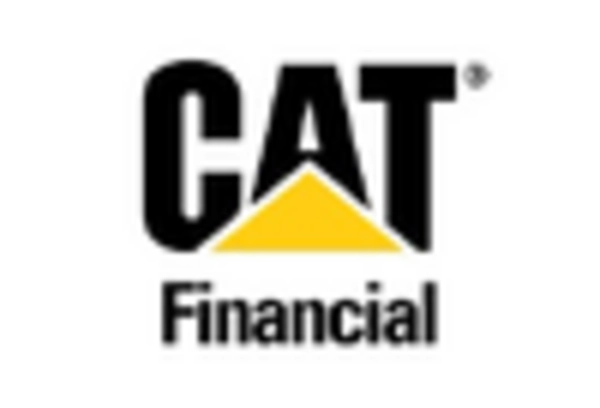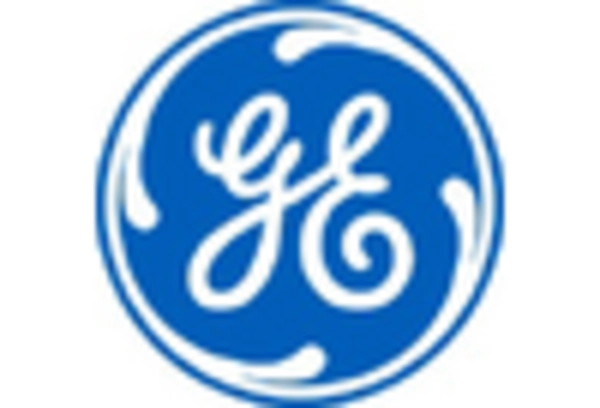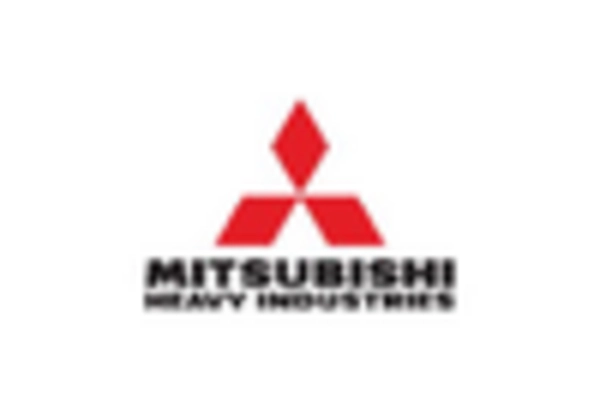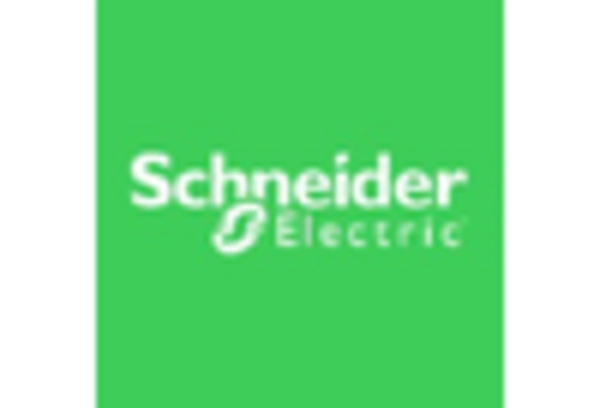Rising Energy Costs
The escalating costs of traditional energy sources are driving interest in the captive power-generation market. As utility rates continue to rise, businesses are increasingly seeking alternative energy solutions to mitigate expenses. In 2025, the average electricity price in the US is projected to reach approximately $0.15 per kWh, prompting industries to explore self-generation options. Captive power systems can provide a hedge against fluctuating energy prices, allowing companies to stabilize their energy costs. This trend is particularly evident in energy-intensive sectors such as manufacturing and mining, where operational costs are closely tied to energy expenditures. The captive power-generation market is poised for growth as organizations prioritize cost efficiency and energy independence.
Environmental Regulations
Stringent environmental regulations are influencing the captive power-generation market. The US government has implemented various policies aimed at reducing greenhouse gas emissions and promoting cleaner energy sources. For instance, the Environmental Protection Agency (EPA) has set ambitious targets for emissions reductions, which may compel industries to adopt cleaner captive power solutions. Companies are increasingly investing in technologies that align with these regulations, such as natural gas and renewable energy systems. The captive power-generation market will benefit from this shift as businesses seek to comply with environmental standards while maintaining operational efficiency. This regulatory landscape may drive innovation and investment in cleaner energy technologies.
Corporate Sustainability Initiatives
The growing emphasis on corporate sustainability is driving the captive power-generation market. Many companies are adopting sustainability goals that include reducing their carbon footprint and increasing energy efficiency. This trend is particularly pronounced among large corporations that are under pressure from stakeholders to demonstrate environmental responsibility. By investing in captive power systems, businesses can not only achieve their sustainability targets but also enhance their brand image. In 2025, it is estimated that over 60% of Fortune 500 companies will have set ambitious sustainability goals, further propelling the demand for captive power solutions. This alignment of business strategy with environmental stewardship is likely to foster growth in the captive power-generation market.
Decentralization of Energy Production
The trend towards decentralization in energy production is reshaping the captive power-generation market. As businesses seek greater control over their energy sources, decentralized systems are becoming increasingly popular. This shift is driven by the desire for energy security and resilience, particularly in the face of natural disasters and grid failures. In 2025, it is anticipated that decentralized energy systems will account for a significant portion of new energy investments in the US. The captive power-generation market stands to benefit from this trend, as companies look to establish self-sufficient energy systems that can operate independently of the traditional grid. This movement towards decentralization may lead to increased innovation and investment in localized energy solutions.
Technological Advancements in Energy Storage
Advancements in energy storage technologies are significantly impacting the captive power-generation market. The integration of battery storage systems allows businesses to store excess energy generated during peak production times for later use. This capability enhances the reliability and efficiency of captive power systems, making them more attractive to industries. In 2025, the energy storage market in the US is expected to grow at a CAGR of over 20%, indicating a strong trend towards energy independence. As companies increasingly recognize the benefits of energy storage, the captive power-generation market is likely to see a surge in adoption, particularly among sectors that require consistent energy supply.
















